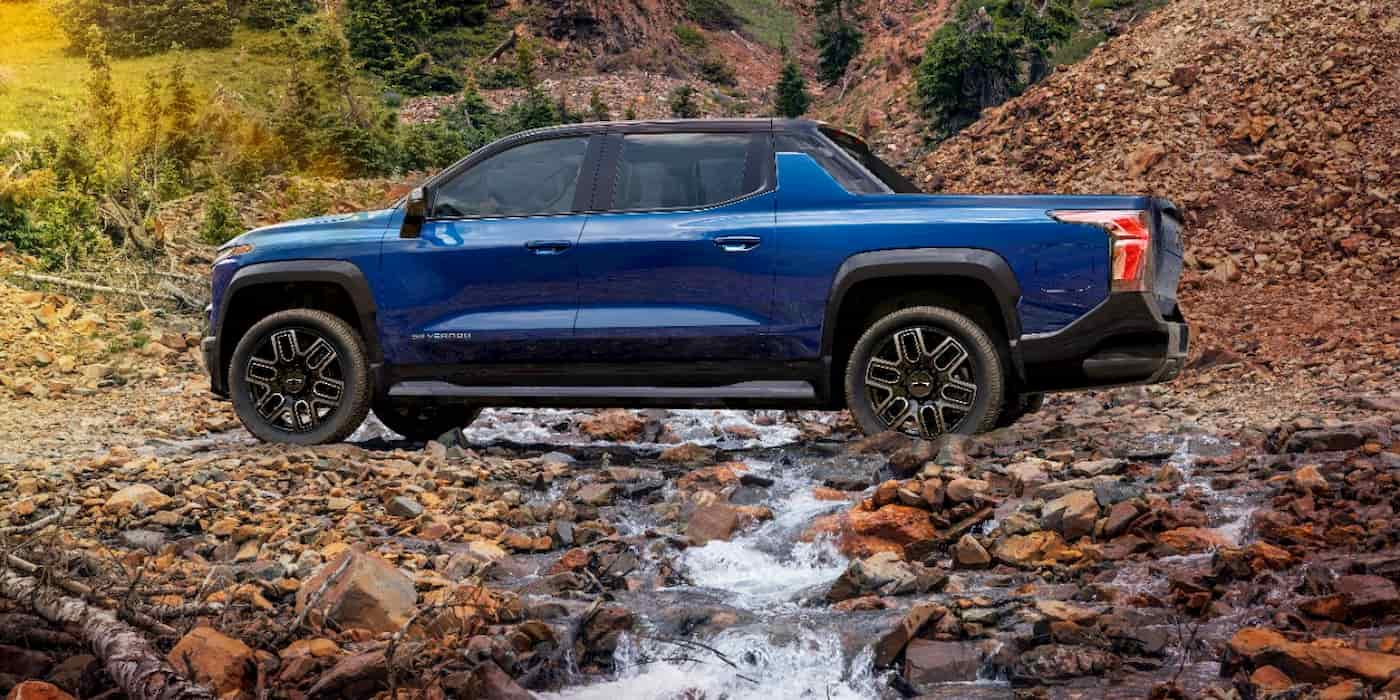
If you saw a good friend of yours, someone that you loved, backsliding again into their destructive habits, you’d say something, right? I would. And I have to do it now. America, you’re my friend. And we need to talk about all of these massive electric trucks.
It’s no secret that America has a love affair with massive vehicles, namely trucks and SUVs. But what is a bit less well known is exactly why. As you can probably guess though, it has to do with money, namely profits for manufacturers.
There was a time when the “big family car” in the US was a station wagon. It fit a seven-person family and the dog, plus everyone’s luggage, and became the iconic family road trip vehicle for decades. It was a simpler time, when cars weighed less, held more, and had better visibility.
So why did that change? Mostly it had to do with the US automotive industry successfully lobbying to get pickup trucks and SUVs classified as “light trucks,” a category previously reserved for commercial vehicles, and one that made it possible to avoid regulations. It was possible because this automotive class, as mostly commercial vehicles, was exempt from the more stringent safety and emissions standards applied to regular passenger cars.
So the US auto industry discovered they could sell vehicles that avoided stricter safety and emissions regulations, thus saving them money in manufacturing. And perhaps most egregious of all, automakers even discovered they could charge a premium doing it by pitching such large automobiles as lifestyle vehicles.
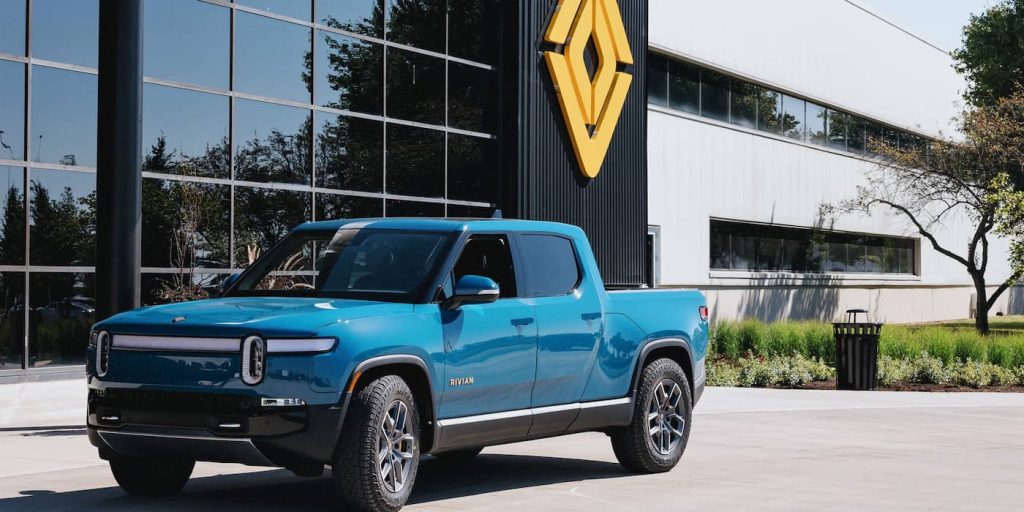
I had hoped that the advent of electric vehicles might finally provide a return to form once avoiding emissions regulations would no longer be a unique advantage of producing in the massive “light truck” category. But I underestimated the inertia of the American automotive industry. The problem is that automakers had already spent two decades telling Americans that if they don’t buy a bigger vehicle than their neighbor, then what were they even doing?
And so it should come as no surprise that in a country where the single best-selling vehicle of any type is a Ford F-150 pickup truck, the last couple years have seen the rollout of the 6,500 lb. Ford F-150 Lightning, the 7,000 lb. Rivian R1S & R1T, the 8,000 lb. Chevy Silverado EV and the gluttonous 9,000 lb. GMC HUMMER EV. All of these are 100% electric trucks and SUVs, and all of them are utterly massive. Listen America, we need to talk. Consider this an intervention.
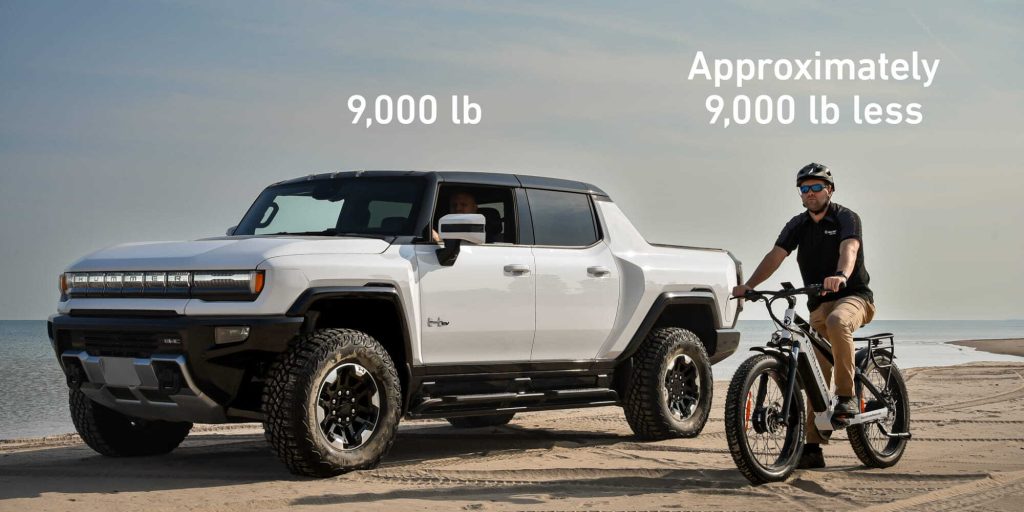
It’s not your fault, America. It’s the automakers’ fault. As Americans, we once got by just fine with smaller trucks.
Remember the Ford Rangers and Chevy S10s of the early 1990s? Here’s the crazy thing. A 1993 Ford Ranger compact pickup truck weighed just 2,900 lb. and yet had a longer bed than Ford, Chevy, and Rivian’s massive electric trucks of today. Some comparisons are nearly comical, like Rivian’s 4’6″ bed compared to the 6′ standard and 7′ long bed on the cute little 2,900 lb. Ford Ranger that came 30 years earlier.
And if you think that’s bad, consider that those two trucks have the same payload capacity. That’s right, they are rated to haul the same amount of weight, around 1,250 to 1,500 lb. depending on the configuration, even though that payload is a full half the weight of the ’90s truck and less than a quarter of the weight of today’s massive trucks.
The even smaller 2,600 lb. Chevy S10 compact pickup truck had a 1,216 lb. payload capacity in 1993, which is nearly identical to the 1,300 lb. payload capacity of the 8,000 lb. Chevy Silverado EV pickup truck recently grabbing headlines. One truck weighs over three times as much as the other and yet they can both haul the same amount of weight.
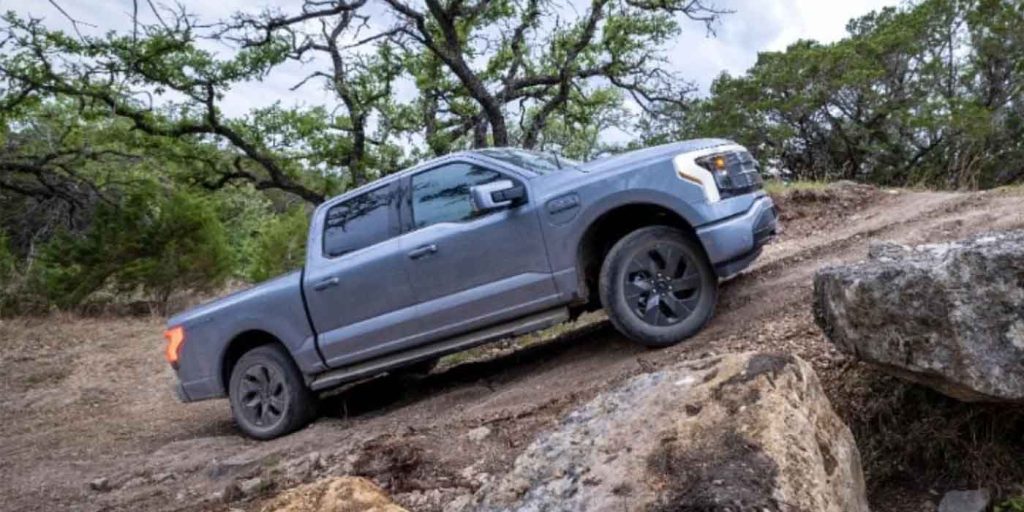
Okay, so if the trucks have the same cargo capabilities, then where is all of that extra weight coming from on today’s massive e-trucks? It’s largely coming from two areas: gigantic powertrains and an excessive amount of fluffy creature comforts.
These lifestyle trucks aren’t just rolling living rooms. They’re also supercars. The Rivian R1T has a 3.1 second 0-60 mph time. The Ford F-150 Lightning does it in 3.8 seconds. Those are competition numbers, folks. There are dudes turning wrenches in their garages right now that could only dream of getting their cars to the mark in 3.1 seconds.
It’s a feat that is possible thanks to that massive torque and low-end power offered by electric motors, but it simply isn’t necessary for most people. There’s no case where the driver of an 8,000 lb. truck needs to get it up to 60 mph in 3.1 seconds, and in fact its ability to do so has been correctly highlighted as a danger in and of itself.
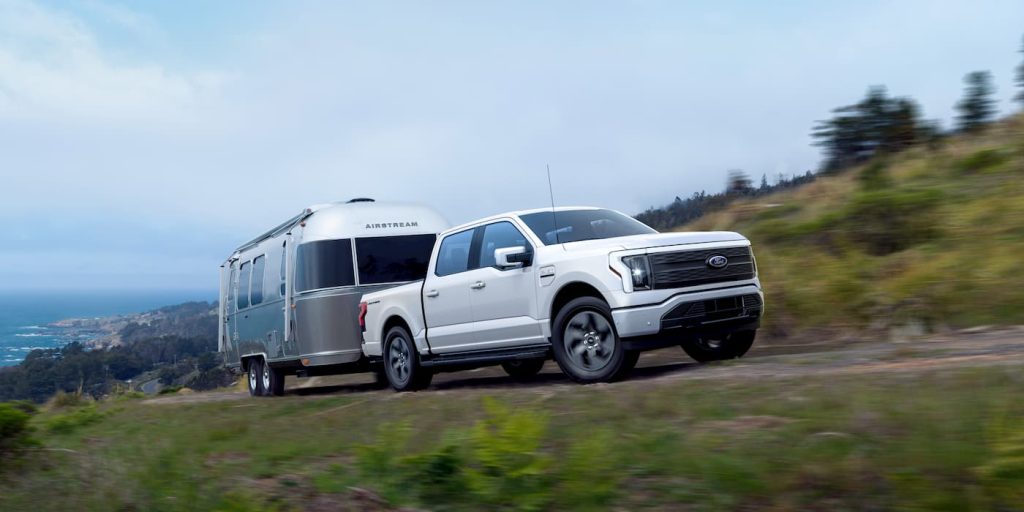
But what about towing?
Aha! There you go: towing. This is pretty much the only vestige of reasonableness left for these massively oversized electric trucks, and even this one is pretty thin. The extreme power that gives these 8,000 lb. vehicles faster acceleration than many sports cars also translates into impressive towing. It’s the one area where they best compact pickup trucks from 30 years ago, offering much higher towing capacities.
But here in lies the rub: Most people don’t need that kind of towing power. At least, they don’t need it very often. If you live south of the Mason-Dixon line, take a closer look at the sea of pickup trucks driving around every day. How many of them are towing anything? Almost none of them, that’s how many. In fact, how many of them have literally anything in the bed? Very few of them, that’s how many.
I’d wager that mosts Honda Civics have more junk floating around their trunks than most modern pickup trucks have in their beds. Next time you’re in the parking lot at Lowes or Home Depot, take a peek at how many of the pickup trucks have nice, shiny tail gates without a scratch on them.
But I digress, we were talking about towing. The standard argument is “but what if I need to tow something?” And the correct answer is, “most people rarely do.” Sure, some people live out of an Airstream trailer that is permanently connected to their truck. But most truck owners tow something heavy a few times a year, maximum. More common towing operations are smaller, lighter jobs that could be performed with a much smaller vehicle. In Europe, it is common to see people towing a camper behind a small family car.
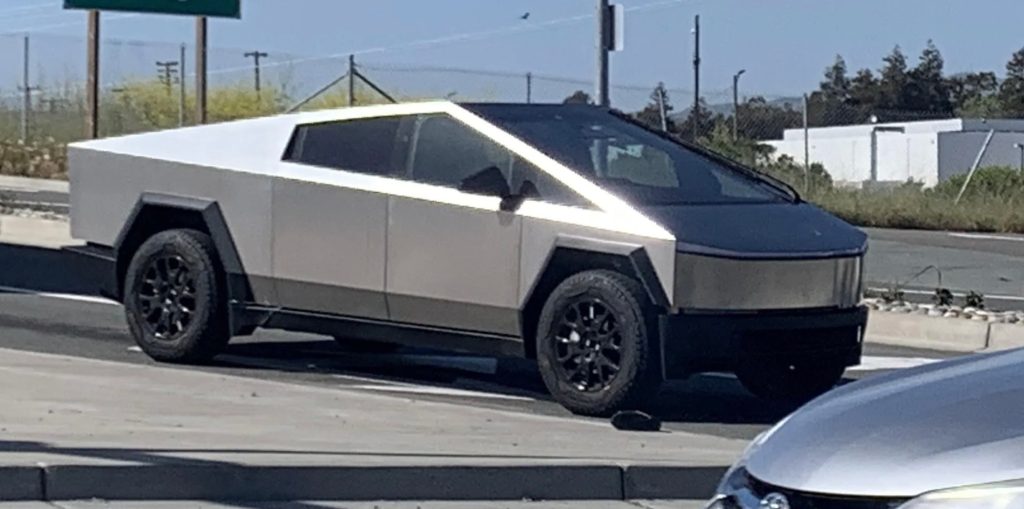
Now if you’re a truck owner, I’m not saying that you specifically don’t use your truck. Or that you never tow or never haul. I’m just saying that almost every time you’ve used your truck recently, it’s probably been for a job that could have been done by a much smaller vehicle, or even… gasp! A compact pickup truck weighing a third as much.
And yes, I’m generalizing here. On average, most trucks on the road right now aren’t doing “truck” things. But not all of them. If you run a landscaping business and you have a 16-foot enclosed landscaping trailer behind your truck, then carry on, this isn’t about you. Thank you for your service. If you’re a diving instructor and pull a boat to the marina or two dozen scuba tanks as part of your job, then have at it. If you’re a plumber and have a bed full of pipes, ladders, and other assorted fitting gear, then go for it. There are people that use their trucks for trucking each and every day. That’s all good, go to town. Because yes, there are real uses for big trucks, so I’m not saying those trucks shouldn’t exist. But what I am saying is that most truck owners don’t actually need them and could instead use a much smaller truck, if they still want to be in a truck. These are the recreational truck owners. The lifestyle truck owners. The majority of truck owners, the majority of the time.
Most people that need “truck capabilities” end up needing to move a couch or a refrigerator once in a blue moon. It’s just like how many electric car owners will say they like knowing they have over 300 miles of range, but you’d be hard-pressed to find many that have actually driven over 300 miles in the car recently.
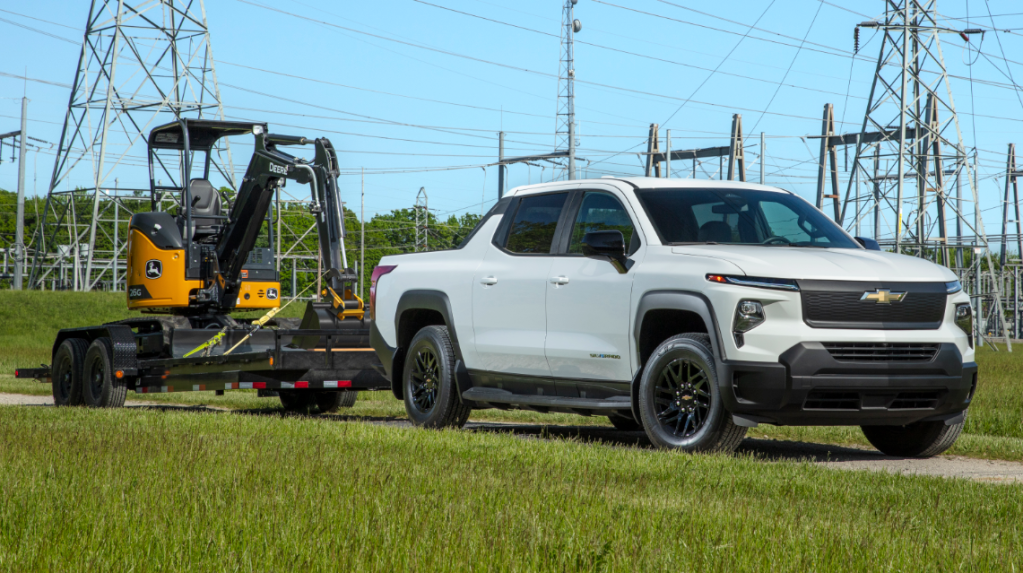
And if that’s you, the occasional “I need to move a couch or my dirt bike” truck owner, then first of all that could be done in a compact truck. And second of all, it could also be done in a rental truck, not one that you drive every day while wasting energy and putting both yourself and others in harm’s way with the increased size, diminished safety (fewer safety regulations for light trucks!), and reduced visibility.
I’m not trying to point fingers, but if I’m doing, then I’ll look inwards as well. I can even see it in my own family. My sister runs a furniture refinishing business and so she bought a Silverado (not the EV one). It’s massive. And yes, once in a while she moves a dresser or a table. But for every trip that she has furniture in the bed, there are probably 20 trips where she’s picking up a gallon of paint or a box of nails or dropping her kids off at school. All of those trips could just the same be performed in a compact truck or a family sedan or even on a bicycle. I love my sister and I hope she never reads this, but even in her case as a blue-collar small business owner, she’d be better off with a small car and just renting the occasional truck. Or even putting a trailer behind a small car. An expensive truck that actually “trucks” infrequently is simply a waste of money, energy, and resources. It’s also a waste of space, especially when you look at parking. Many parking lots simply can’t accommodate today’s larger trucks into existing parking spaces.
America needs to reform its microcar laws
One of the reasons we likely don’t see compact electric trucks (or really any compact trucks in serious numbers) anymore is because there just isn’t much profit in it. Automakers have already “sold” Americans on the idea that they need a bigger vehicle, and so now all of the profits are in producing those bigger vehicles and squeezing more add-on cash flow out of them in the form of accessories, servicing, etc.
But what could finally make a dent in that would be new electric mini-truck laws.
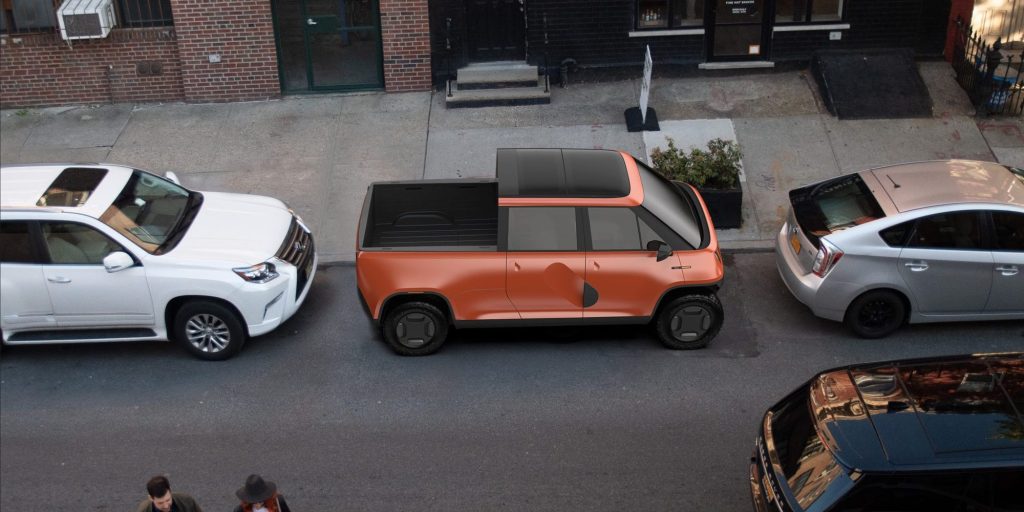
We almost had a true highway-capable electric mini-truck in the form of the recently unveiled TELO mini-truck, but there too the designers ended up screwing the pooch by chasing after the high-end market.
They gave it a top speed of 125 mph, which is ridiculous considering you can’t legally do anywhere close to that in the US. They gave it 500 horsepower, which is ridiculous in a freaking mini-truck. They gave it a 0-60 second time of 4.0 seconds, which again, is ridiculous in a mini-truck. And they gave it an estimated $50,000 price, which since no automaker has yet stuck to their estimated price, means it will be north of $50K if it ever makes it to market.
No one buys a mini-truck as a lifestyle vehicle or to make a statement (unless your statement is that your manhood is so appreciable that driving a mini-truck is doing the opposite of compensating for any, ummm, insufficiencies you may be hiding). People use mini-trucks for getting work done. They use them for hauling crap around town, making deliveries, and generally going about real daily work.
The problem is that the US’s microcar laws, which created a class known as Low Speed Vehicles to remove nearly all of the safety regulatory hurdles of larger cars, also has the unfortunate stipulation of limiting speeds of these vehicles to just 25 mph. That’s too slow for most people to feel comfortable driving a truck in a city or suburb, even if in actuality traffic often moves at far less than 25 mph in many cities and suburbs.
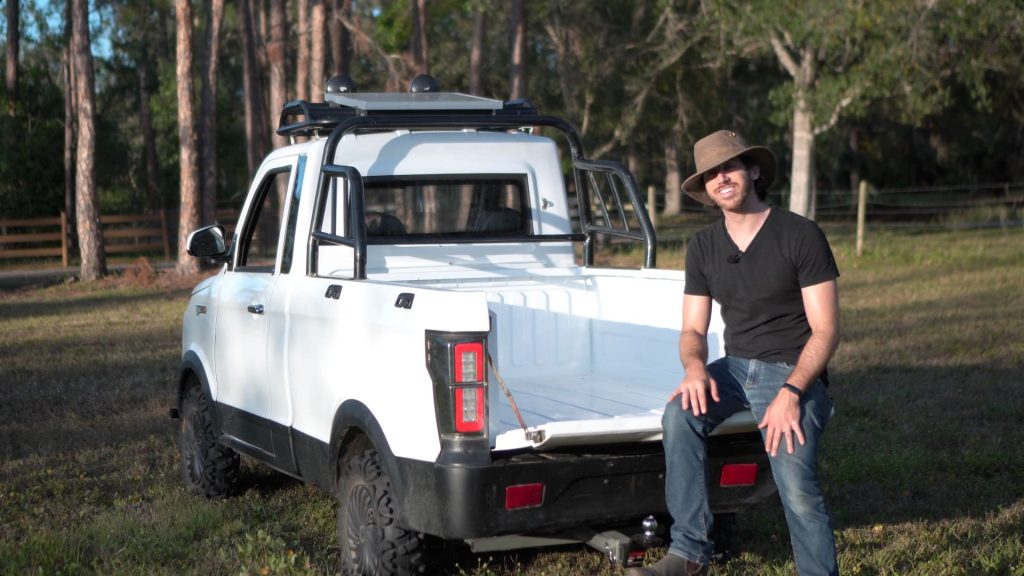
But if the US finally created a similar class of vehicles to quadricycles in Europe, a group of four-wheeled vehicles that have fewer regulations but are limited in speed to around 45-55 mph, then an entire new industry of electric mini-trucks could spring up nearly overnight.
Automakers could enjoy quicker paths to market and lower development costs, and consumers could enjoy lower-cost, smaller, and more convenient electric trucks. Because let’s face it, as much as you’d like a new 450-mile range Chevy Silverado EV truck, you don’t have the $77,000 for it.
But you might have $35K for a modern day Chevy S10 pickup compact pickup truck that just reaches highway speeds or $25K for an electric mini-truck that can hit city/suburb speeds.
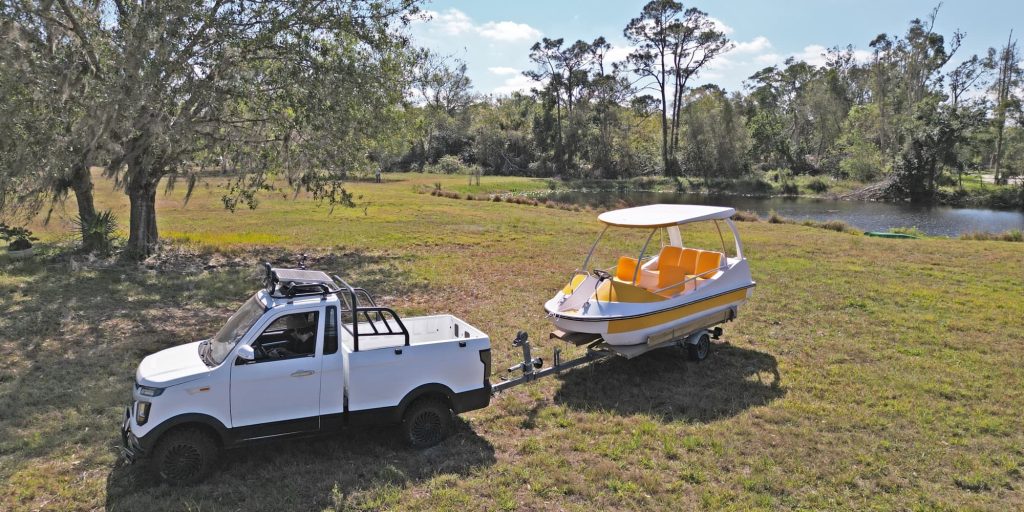
Top comment by Brian S
I sold my 2019 F150 Supercrew and bought a Tesla Model Y with the towing package and a one ton 5x8 trailer with a ramp. I do not miss the F150 one bit. The trailer has a higher payload, is larger than the truck bed, and is so much easier to load. And I don't have to drive a truck everyday. Now if they can get a Maverick sized EV truck to market, I may have to buy one.
As much as I’d like to see a new class of mini-truck and not-as-low-speed-vehicle laws, it’s unlikely to happen anytime soon. But that doesn’t mean it’s any less important of a goal to work toward. Electric mini-trucks are common in Asia and Europe precisely because they have laws that create a framework for their production and use.
That’s what the US needs. It needs electric mini-trucks that can legally reach 45 mph to more comfortably traverse suburbs and larger city streets. It needs automakers to return to the concept of compact pickup trucks, offering us electric versions that top out at 80 mph yet can haul as much as massive flagship electric trucks over twice their weight.
I’m not sure how we achieve that, but it seems like it needs to be an outside force. The automakers have demonstrated that they aren’t interested in doing it themselves. Weight-based vehicle registration fees have been presented in New York and other areas, and perhaps parking should be prioritized for smaller, more space efficient cars. There’s plenty of ways to help guide drivers towards cars that are smaller, safer, and more efficient.
I’m not saying the existing group of massive trucks need to go, though part of me wishes they would be relegated to commercial use as they were once intended. But we need to provide better offerings that more accurately match what drivers actually need, not what automakers tell them they need. Because for every pickup truck or SUV out there towing a boat right now, there are triple digits of pickup trucks and SUVs hauling a gallon of milk and little Timmy’s soccer bag. A more American road image, unfortunately I can not imagine.
FTC: We use income earning auto affiliate links. More.




Comments